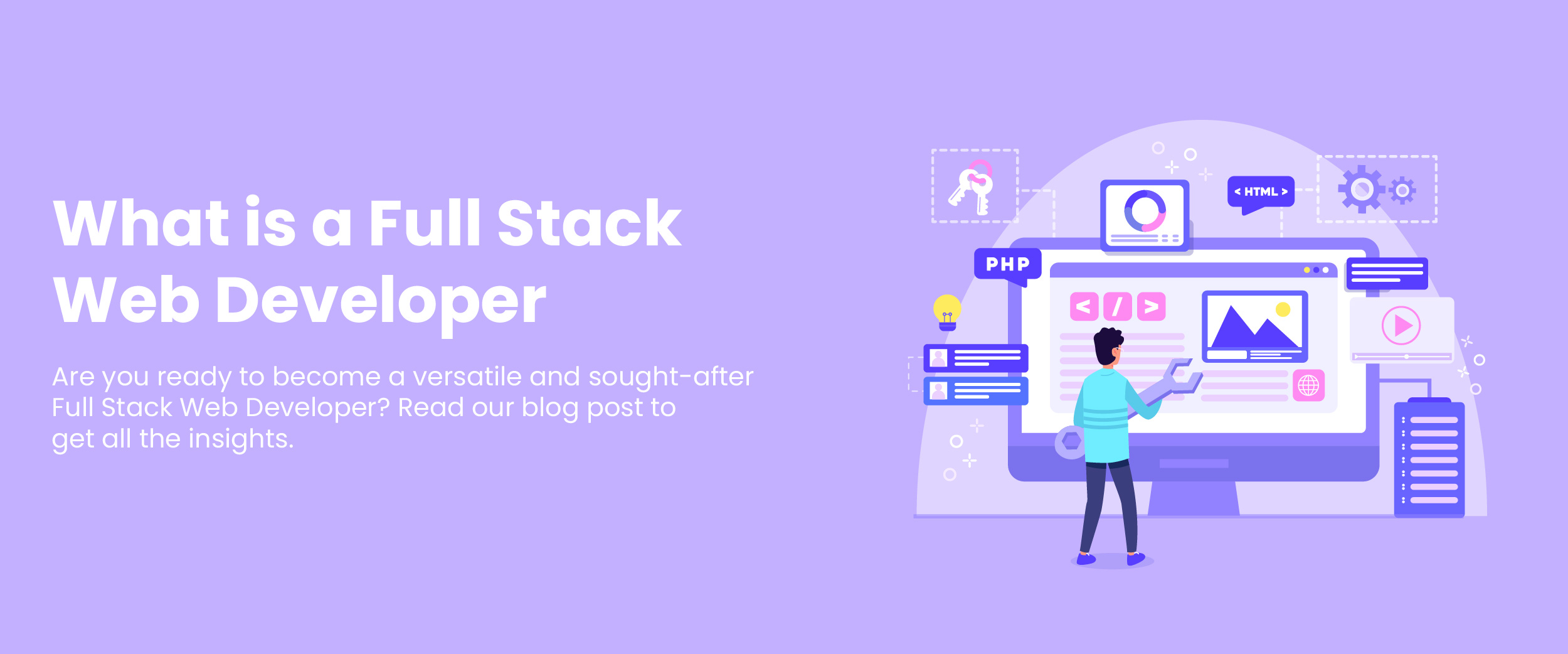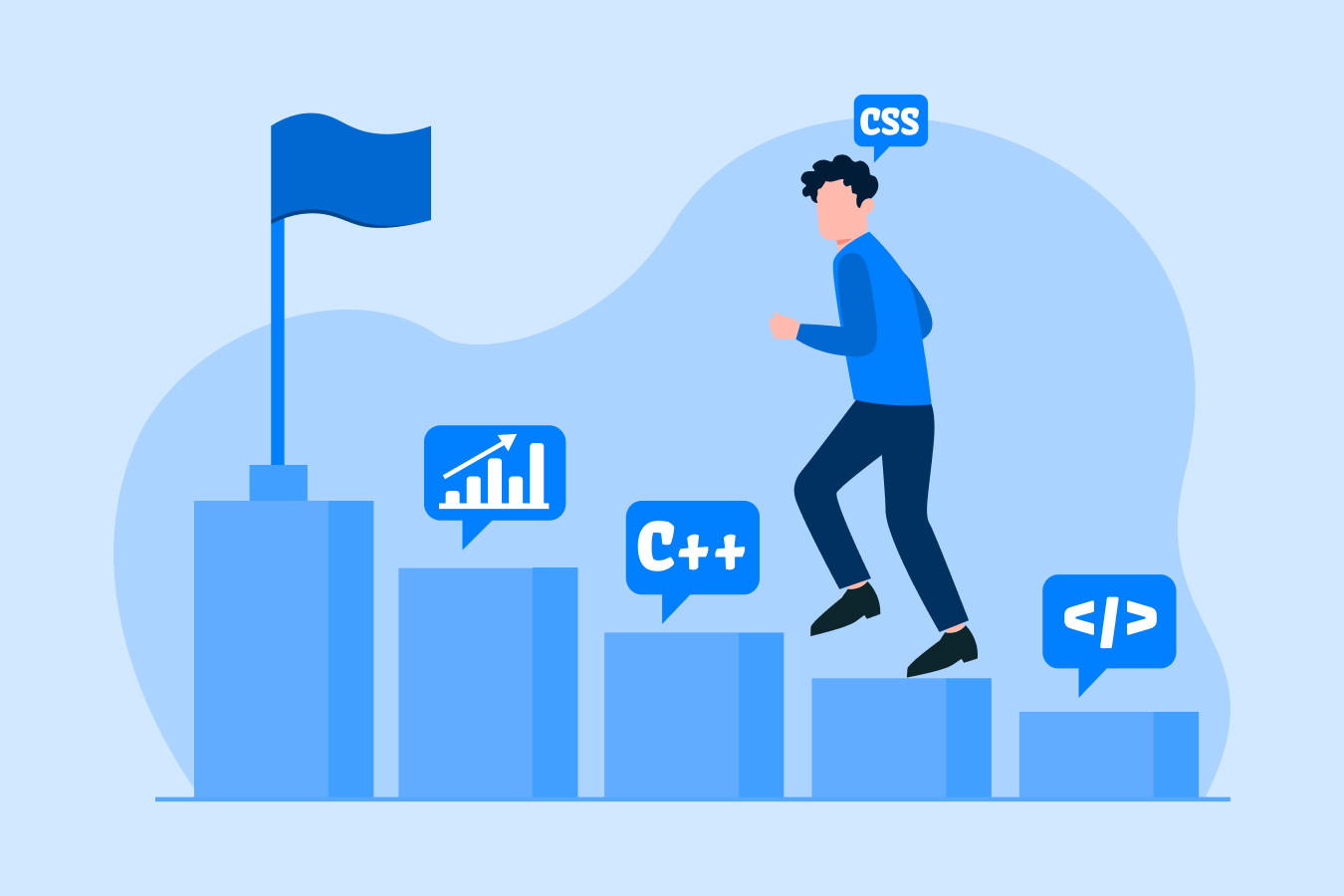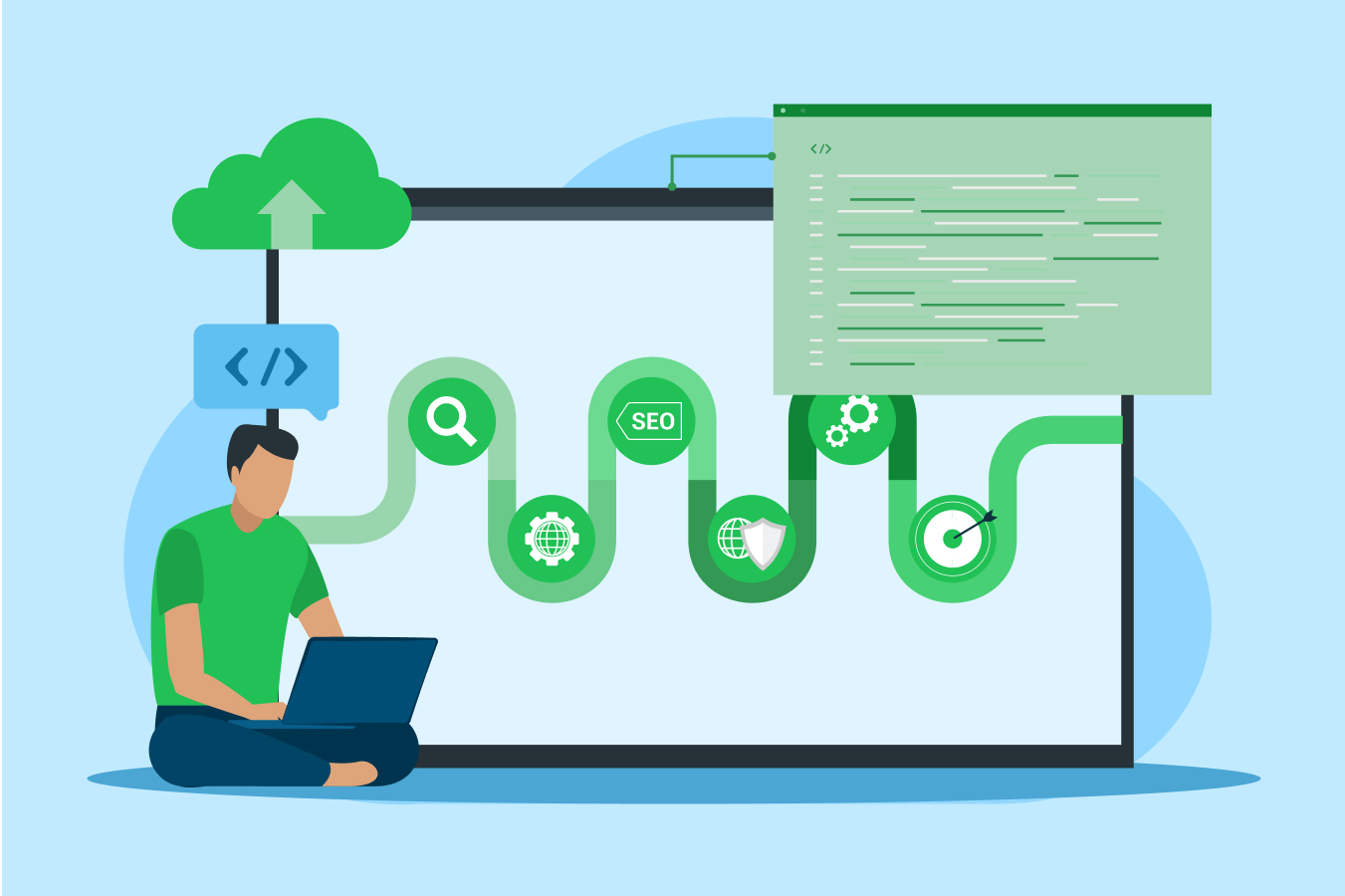What is a Full-Stack Web Developer?- Role, Skills Required, & Career Scope
Businesses are moving towards digital transformation and investing more in their online presence. Therefore, the need for skilled developers to create and maintain efficient and effective web applications is growing.
According to data from LinkedIn, full-stack web developer jobs are expected to increase at a 4.5x rate in the near future. While that is the case, it is crucial to grasp a basic understanding of what a full-stack web developer is, what their roles and responsibilities are, and the skills required to become one.
Full-Stack Web Developer Overview
A full-stack web developer is a software developer with expertise in both front-end and back-end development. The front-end part deals with the user interface and user experience, and the back-end deals with server-side programming and database management.
Full-stack web developers are familiar with multiple programming languages and frameworks. These include HTML, CSS, JavaScript, React, Node.js, PHP, etc. Additionally, they also have experience working with databases, servers, APIs, and web security. They are often responsible for designing and implementing the user interface. They may also test, debug, and deploy the application.
In short, a full-stack web developer has a broad range of skills, making them versatile and valuable to the development team.
Roles and Responsibilities of a Full-Stack Web Developer
Seasoned full-stack engineers are extremely important to businesses. They help improve teamwork and communication and can even write code, work with databases, administer a network, assist clients, and even engage in sales.
The roles and responsibilities of a full-stack web developer can vary depending on the company and project they are working on. However, here are some common responsibilities that full-stack developers may have:
- Creating the front-end architecture of websites.
- Preparing user interfaces for online pages.
- Creating applications for the website’s back-end.
- Building effective servers and databases.
- Providing cross-platform mobile phone optimization.
- Ensuring application responsiveness.
- Collaborating with graphic designers on site design elements.
- Looking after the project until its successful completion.
- Planning and creating APIs.
- Addressing consumer and technical needs.
- Familiar with advancements in programming languages and web apps.
Aspiring to become a Web developer! Join our full stack web developer course with placement and start your dream journey.
Skills Required to Become a Full-Stack Web Developer
Becoming a full-stack web developer requires a combination of technical and soft skills.
1. Technical Skills Required to Become a Full-Stack Web Developer
The following technical skills are required to become a full-stack developer.
i. Knowledge of Front-End Languages
A full-stack developer must know languages like HTML, CSS, and JavaScript. These are the building blocks of web development and are essential for understanding more advanced technologies.
ii. Knowledge of Back-End Languages
Understanding languages, such as Node.js, PHP, Ruby on Rails, or Python is necessary as they are commonly used for developing back-end applications and provide a foundation for full-stack development.
iii. Understanding of Databases
Understanding databases and how to interact with them using SQL or other database management systems is a necessary technical skill.
iv. Knowledge of Frameworks
Learn popular frameworks, such as React, Angular, Vue.js, Express.js, Laravel, or Django. These frameworks help you build robust and scalable web applications with responsive, dynamic, and interactive user interfaces.
v. Web Hosting Platform
A developer must get familiar with web hosting platforms like Google Cloud, Microsoft Azure, and Amazon Web Services. You can deploy your product on a cloud service provider with the help of these platforms and access it over the internet.
vi. Application Program Interface (API)
APIs help with the interaction between two applications. Therefore, full-stack developers must know about popular APIs, such as SOAP and REST.
vii. Version Control System
VCS is essential in product management as it helps manage files and keep track of the changes in the project. Some popular platforms used for version control are GitHub and Subversion.
viii. Understanding of Design Fundamentals
Full-stack developers should know the basic design fundamentals for interfaces to understand user interaction with the application or the website.
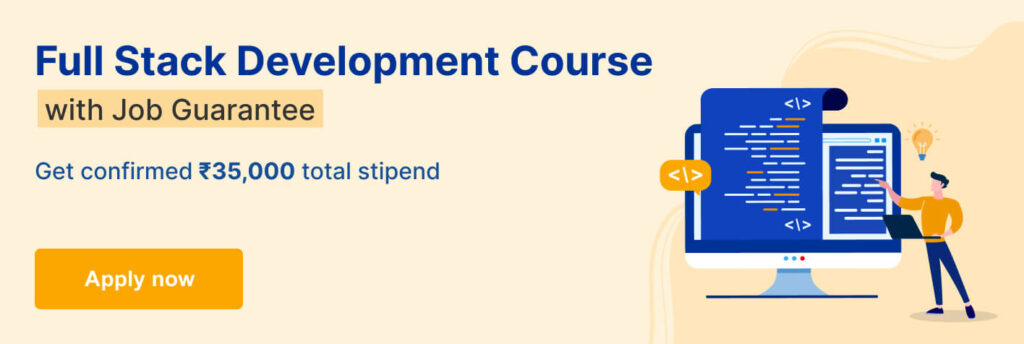
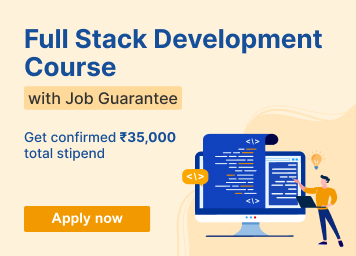
2. Soft Skills Required to Become a Full-Stack Web Developer
A full-stack developer must possess some soft skills to enhance their work. The following are some of the required soft skills.
i. Problem-Solving Skills
These skills are essential to identify bugs and prepare an error-free application or website.
ii. Strategic Planning
It helps the developers strategize the development process of the products, from ideation to making the final product.
iii. Time-Management Skills
Meeting deadlines is vital for a full-stack developer. It ensures the timely completion of tasks and delivery of products.
iv. Creativity
The popularity of an application or website depends on user interaction. Developers must use their creative minds to create an engaging product.
You should also consider exploring a comprehensive Full-Stack development course that will help you acquire the necessary skills. Becoming a full-stack developer requires a commitment to learning and ongoing education. By continuously improving your skills and gaining experience, you can become a skilled and versatile full-stack developer.
How to Become a Full-Stack Developer?
A full-stack developer is responsible for both front-end and back-end development tasks. You can become a full-stack developer with the following steps.
1. Get a Degree
To pursue any career, you need to begin by getting the necessary education. To become a full-stack developer, pursue a bachelor’s degree in software engineering, computer science, or web development.
2. Build the Foundation With Basic Programming Languages
Learn programming languages, such as Python, JavaScript, Node.JS, PHP, C++, and more. Also, learn languages used for web development, such as HTML and CSS.
3. Learn About Development Frameworks and Tools
Now, build your expertise and study the frameworks essential for front-end and back-end development. Also, learn React, AngularJS, and JQuery. You can do so with the help of short-term certification courses.
4. Gain Knowledge About Database Technologies
To become a Full-Stack developer, you must know about database technologies, such as Node.js, MySQL, NoSQL, and DevOps tools like Git.
5. Practice is the Key
You have gained all the knowledge and learned about the necessary languages, concepts, and tools. Now, improve your skills by practicing and working on projects.
6. Gain Experience
You can work as a freelancer, participate in coding challenges, or engage in open-source projects to gain experience. Furthermore, as you gain confidence, you can apply for internships. This will provide you with professional experience.
7. Connect With Fellow Developers
Community helps individuals thrive. Network with fellow developers, beginners, or experienced, and gain more insights into the industry.
8. Keep Your Resume Up-To-Date and Start Applying for Jobs
Finally, now that you have enough knowledge, skills, and experience, you can update your resume accordingly and apply for suitable full-stack developer jobs.
Career Options for a Full-Stack Web Developer
There are several career paths available for full-stack developers. Following are some of those:
- Full-Stack Web Developer: A full-stack web developer builds web applications from scratch or maintains existing web applications. They are responsible for frontend & backend development, as well as database management.
- Full-Stack Mobile Developer: A full-stack mobile developer develops mobile applications for Android and iOS devices. They are responsible for front-end development, back-end development, and integrating the application with APIs and databases.
- Full-Stack Engineer: A full-stack engineer is responsible for the entire software development process, from design to deployment. They have a broad range of skills and can work on different parts of the development process.
- Full-Stack Software Developer: A full-stack software developer creates software applications for various industries, like finance, healthcare, and e-commerce. They are responsible for both front-end and back-end development. They also have a deep understanding of software development best practices.
- Full-Stack Consultant: A full-stack consultant provides expertise and guidance to companies on full-stack development. Their responsibilities include analyzing software applications, developing customized solutions, and improving software development processes.
Salary of a Full-Stack Web Developer
A career in full-stack development can be financially rewarding. However, the salary of a full-stack developer varies depending on several factors, such as location, experience, and industry.
The average salary for a full-stack web developer in the United States is around $116,000 per year. However, the average salary in India is somewhere close to INR 5.5 LPA.
However, this can vary based on several factors. Here are some factors that can affect the salary of a full-stack web developer:
- Experience: Experienced full-stack developers typically earn a higher salary than those who are just starting in their careers.
- Industry: The industry in which a full-stack developer works can affect their salary. For example, developers working in finance, healthcare, or e-commerce may earn more than those working in other industries.
- Location: The location where a full-stack developer works can also affect their salary. Developers in major tech hubs, such as San Francisco, New York, or Seattle, for example, may earn more than those working in smaller cities or rural areas.
- Company Size: The size of the company can also affect a full-stack developer’s salary. Developers working for larger companies typically earn more than those working for smaller startups.
Conclusion
A full-stack web developer is highly valued by businesses because they are capable of working on all aspects of web development. From the front end to the back end, as well as database management, API integration, and project management, they know it all! Their versatility and expertise make them essential for companies looking to build and maintain high-quality web applications.
Also, check out web development projects if you’re looking to work on inspiring web development ideas.
FAQs
Full-stack development is not easy. It includes both front-end and back-end development. Therefore, it takes a lot of technical knowledge in computer programming and skills to perform full-stack development tasks.
A full-stack developer should have the following skills:
a. Working knowledge and experience in both front-end and back-end development.
b. Proficiency in a range of web development skills, including HTML, CSS, and JavaScript.a.
c. Knowledge of front-end development frameworks like React, Python, and Angular.
d. Must know how to work with server and database technologies like Node.js and MySQL and DevOps tools like Git.
The most widely used programming languages for full-stack developers are Node.Js, Python, C++, ASP.NET, and PHP.
There is a high demand for full-stack developers who can work with both front-end and back-end technologies.
The average salary for a full-stack developer is ₹8,60,000 per year in India.
A full-stack engineer can earn up to ₹23,00,0000 per year (₹1,90,000 per month).
While full-stack development can be a challenging job, a fresher can become a full-stack developer. With the right training and resources, a fresher can acquire the necessary skills and knowledge needed to become a full-stack developer.

